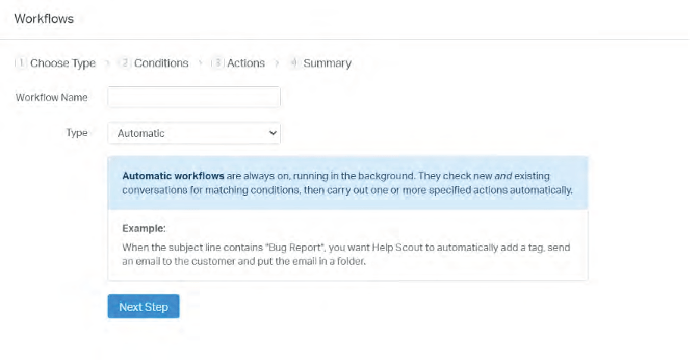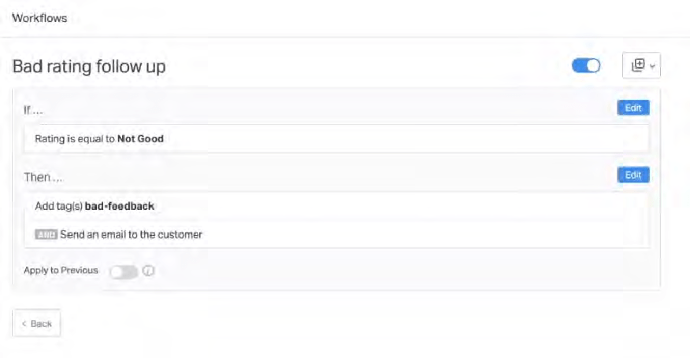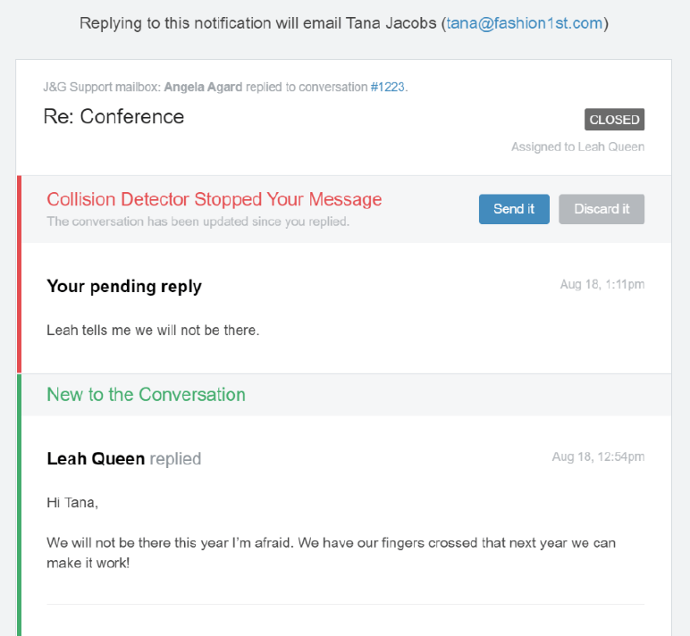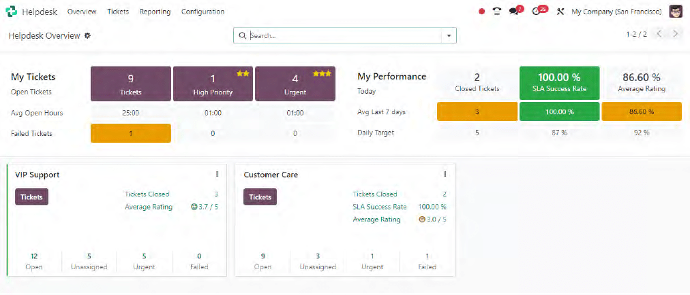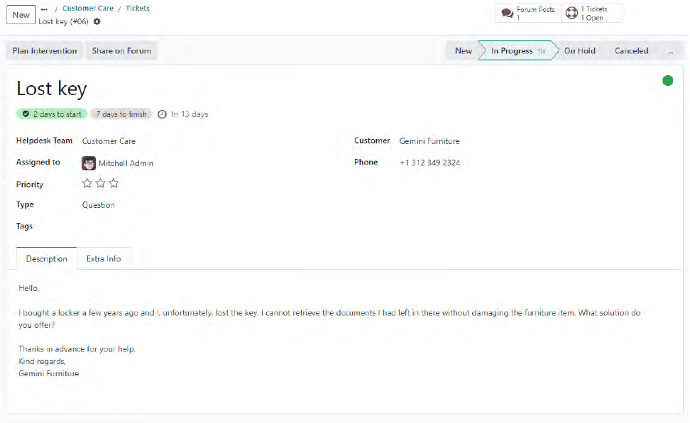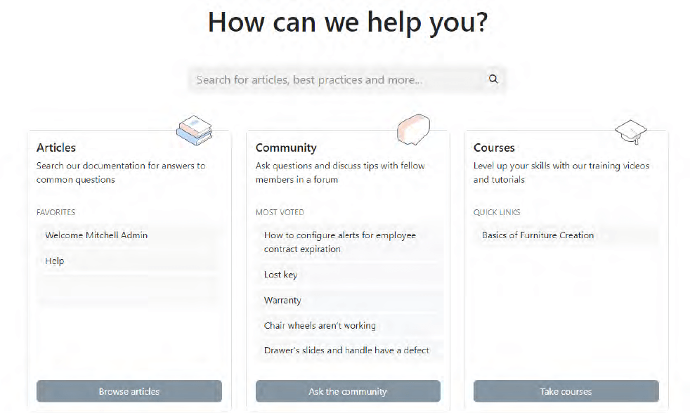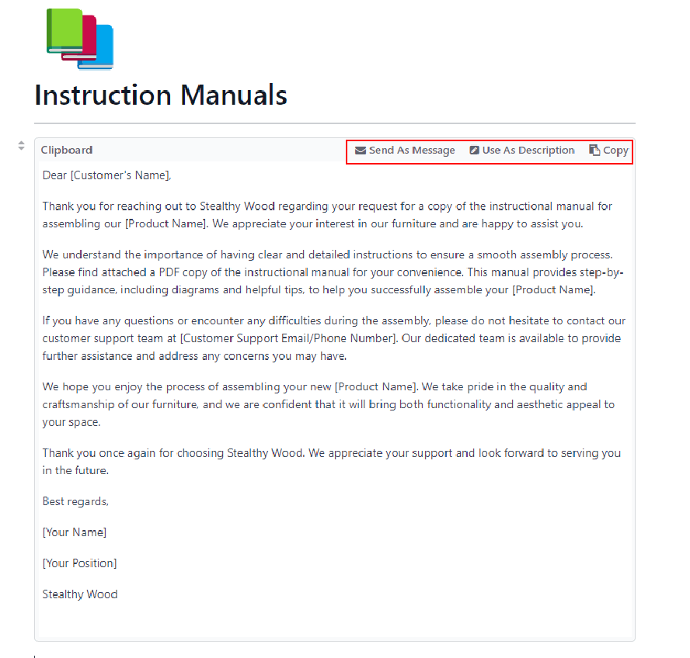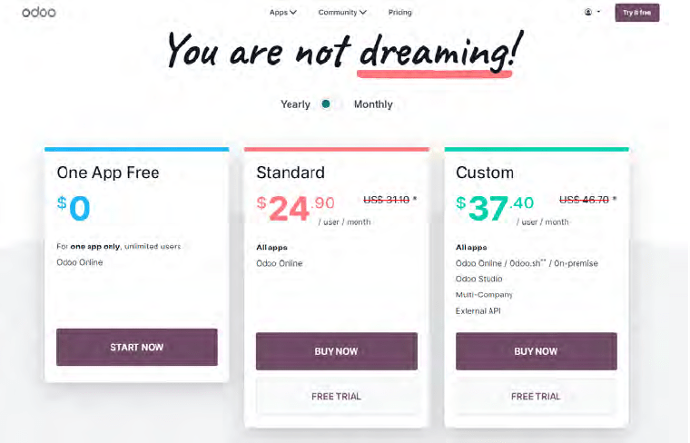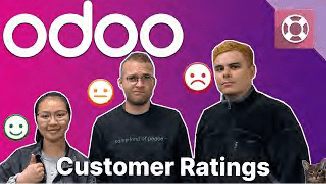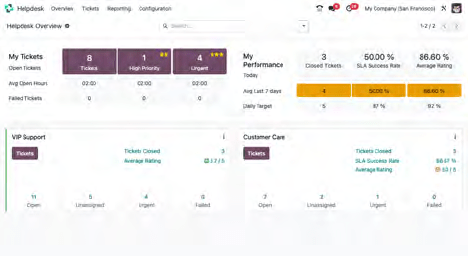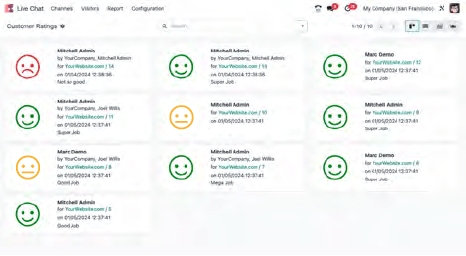Introduction
People don’t trust you.
More specifically, people don’t trust your business, or businesses in general. At least not anymore.
Whether you want to blame this reality on a rapid rise of misinformation, corporate scandals, or data
leaks, consumers are not in the habit of placing their faith in businesses anymore.
According to a 2018 survey conducted by HubSpot Research 1
:
55% of respondents don’t trust the companies that they buy from as much as they have in the past.
65% do not trust advertisements.
71% do not trust sponsored social media ads.
That’s pretty bad, right? But wait, there’s more.
A similar survey the same year 2 found that salespeople are the least trusted sources of information
consumers rely on when making buying decisions related to business software.
The news wasn’t all terrible, though. 55% of respondents reported that their most trusted source of
information was word of mouth.
…so how is this good news? Because it means your customer base is one of the strongest sales
tools at your disposal — a satisfied customer can do a significant amount of legwork on your behalf
without even realizing it.
The keyword there? Satisfied.
Supporting the Customer (and literally everyone else)
Think of the customer support team as the frontline heroes of a company. They can turn an irate
email into a glowing review. They understand exactly what the customer wants. They can translate
these wants into feedback and deliver it to the right team. They solve problems before they spiral
out of control.
They may or may not wear capes.
Making sure this group of superheroes has the right tools to tackle customer issues smoothly is
crucial for a company's long-term success. When you consider the fact that retaining an existing
customer can be anywhere from 5 to 25 times less expensive than acquiring a new one, investing in
the right equipment upfront just makes sense.
As stated in the 2023 National Customer Rage Survey:
“Customers and organizations would be well advised to perfect their digital complaint handling
capabilities, as digital complaining is now the primary channel customers use to complain about
their most serious problems.”3
This is where a help desk comes in.
1 HubSpot Research. (2018). Trust Survey, Q1 2018. Retrieved from [https://blog.hubspot.com/service/customer-acquisition-study].
2 HubSpot Research. (2018). Annual State of Inbound 2018. Retrieved from
[https://blog.hubspot.com/service/customer-acquisition-study].
3 Customer Care Measurement & Consulting. (2023). The National Customer Rage Survey
What is a help desk?
A help desk, or ticketing system, is a type of software platform used by organizations to manage
customer support requests, technical issues, and other related inquiries. It provides a structured
and organized approach to handling customer problems and ensuring timely resolution. Tickets
are created when requests or feedback is received, and then assigned to the relevant support
agents based on their expertise or workload. The system ensures that the tickets are distributed
evenly among the staff members.
Most help desk software follows this basic framework, with tickets created from customer
inquiries and solved via support agent responses. However, the available features and
customizations vary as wildly as the providers themselves.
For the scope of this whitepaper, we’ll be examining two platforms that offer robust help desk
ticketing platforms: Odoo Helpdesk and Help Scout. In the following sections, we've broken down
both the flagship offerings as well as unique features for both platforms, so curious help desk
shoppers may be presented with an accurate picture of the strengths and differences between
these two providers.
Limitations
To deliver an objective and informative comparison between Odoo Helpdesk and Help Scout, we must acknowledge the inherent
limitations and potential biases that may influence the findings presented in this white paper. Full transparency is essential to
maintain the integrity of the evaluation process.
While we have extensively tested the Odoo Helpdesk platform, it is essential to note that the evaluation of Help Scout is based on
a short-term trial. The difference in trial durations may impact the depth and breadth of the assessment, potentially favoring the
platform with a more extended trial period. As employees of Odoo, our team members are more familiar with the Odoo Helpdesk
platform than Help Scout. This familiarity could influence each platform's perceived usability and effectiveness.
Software platforms are dynamic, with continuous updates and improvements. As we assessed these platforms at a specific point,
the information presented may reflect something other than the most recent updates or changes to Odoo Helpdesk or Help Scout.
Despite these limitations, we intend to provide a comprehensive and impartial analysis of Odoo Helpdesk and Help Scout based
on the available data and our experiences. We encourage readers to consider these limitations while interpreting the results and
conduct further research and trials as necessary for their specific requirements.
About Help Scout
Help Scout was founded in 2011 in Boston, MA, and manages customer support inquiries through
its email-based platform. Help Scout's core product, the shared inbox, acts as a central hub for all
channels of customer inquiry, including social media, email, chat, and phones. Team members
use this inbox to collaborate, assign conversations, and share drafts of responses before
reaching out to customers.
Help Scout integrates with a wide range of tools and third-party platforms, including Salesforce,
Slack, and more. Help Scout prides itself on its ease of use, and implementation. While it may lack
some of the customization and advanced features of some of its contemporaries, it rates highly
with customers who prioritize simplicity.
customers who prioritize simplicity.
About Odoo
Odoo was first created in Belgium in 2005, as TinyERP. Today, under the continued leadership of
Founder and CEO, Fabien Pinckaers, Odoo has grown to offer a suite of over 80 integrated
applications, and over 44,000 available third-party add-ons. From accounting, sales, CRM, MRP,
marketing, HR, and more, there is an Odoo app for every step in the business workflow. Odoo has
a large and dedicated open-source community of developers, and users, who actively contribute
to the growing number of add-ons and integrations, as well as the continued development and
improvement of the existing library.
Odoo Helpdesk allows teams to track, prioritize, and solve customer tickets in an organized and
consistent way. Odoo Helpdesk features the ability to delegate tickets between multiple teams,
and assign and track deadlines based on custom service-level agreement (SLA) rules. Along with
the Odoo Live Chat application and custom Chatbot, Helpdesk includes Knowledge base and
eLearning Forum integration, so customers can solve their own issues fast.

Feature Highlights:
Help
Scout
Help Scout is a customer service platform that emphasizes direct contact between support staff
and customers. Its central product is a Shared Inbox, where businesses manage customer
inquiries and support requests received through multiple channels, including email, chat, phone,
and social media. The Shared Inbox, along with integrations such as the help center and live chat
widget, keep information consolidated for support teams of any size.
Beyond the shared inbox, Help Scout includes self-service features that allow customers to solve
issues on their own, without having to submit a request to the support team.
Shared Inbox
Help Scout’s core product offering, the Shared Inbox, is where requests from customers are
funneled. This is beneficial for teams that receive a high volume of messages, as it prevents
bottlenecks from occurring in an individual agent’s personal inbox.
When a customer email is received, it is added to the team’s Unassigned inbox. Once a user is
assigned to handle the issue, it moves to their personal Mine inbox, where they can communicate
directly with the customer until the matter is resolved.
Even if a user is not assigned to an email, they can still view the message, and comment through
the use of the Notes feature. This makes it easy for team members to collaborate on complicated
problems, without having to leave the Help Scout platform.
Workflow
Workflows are conditional rules that can be set up to perform automated actions in Help Scout.
They are built on if/then/else logic statements, where parameters are identified, and then actions
are taken by the software.
Workflows can be configured to run automatically, which means that they are always running in
the background, looking for conversations that match the conditions to carry out the desired
actions. Manual workflows are designed to only work once the user has found a conversation that
fits the set of conditions.
For example, let’s say we want to set up a workflow to target negative ratings we receive when
we ask customers how they liked the response to their inquiry. We would create an automatic
workflow with the following conditions:
If Rating is equal to Not Good
Then Add tag(s) bad-feedback
AND Send an email to the customer (This email can be modified using a template)
After creating this workflow, the system will calculate the number of conversations that meet
these conditions. From there, this workflow can be applied to the messages that match the
criteria, or it can just simply be applied going forward.
Collision Detection
The Collision Detection feature prevents two users from responding to a single email at once.
When more than one user is viewing a message, a yellow icon appears. If one of the users is
replying to the message, the icon turns red. If one or more users attempt to send a reply at the
same time, or while one user is adding a note, Help Scout prevents any replies from being
delivered to the customer.
When a user wants to pull in another member of their team (or another team entirely), they can
ping them by using the “@mention” feature. Typing the “@” symbol in a note opens a dropdown
list of users and teams with access to the inbox. When the user or team is selected, they will be
notified based on their notification settings.
Docs
Docs is Help Scout's knowledge base, or help center product. Through Docs, companies create a customizable website where they can host support documentation that integrates directly with their Help Scout inbox.
A Docs site is beneficial to both internal users and customers. When a user is responding to a message, they can search through Docs articles, without leaving the message window, and insert appropriate links to share with customers. Because Docs sites are public 4, they provide customers with the ability to search for answers to some of the most common issues without having to submit a question to the support team.
Beacon/Live Chat
Help Scout’s Beacon feature combines documentation, a contact form, and a live chat platform
into one embeddable widget. Beacons present customers with the option to search through
articles to find answers to their questions, send an email, or request a chat with a live agent. The
order of these steps can be changed based on the mode selected when creating the individual
Beacon.
The options that are presented to a customer, and the
order in which they are presented, are based on the
modes enabled on each Beacon widget. There are
three available modes:
Self service: Visitors are unable to see contact options until they have interacted with the help content that has been provided.
Neutral: Visitors are presented with both the help content and contact options and can choose which to engage with first.
Ask first: Visitors see the contract options first, but can still interact with the help content.
4 A Docs site can be restricted so that only authenticated visitors will be able to access it. Additionally, collections and articles can
be marked private for internal use only. Restricted Docs are only available on Plus and Pro plans.
For example, let's say we have a fairly comprehensive return policy outlined in our documentation. If we notice our live chat agents are spending a lot of time repeating information that can be found in our documentation, we can create a "Self Service" Beacon and embed it on a page of our site that handles returns. This way, customers will have to interact with the content before they are able to contact an agent or submit a question.
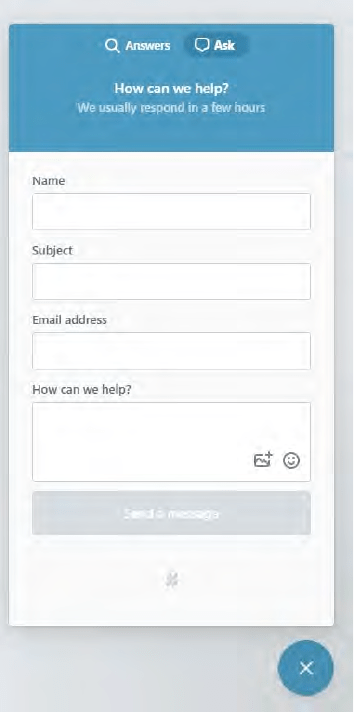
Integrations
As Help Scout's main focus is on customer support, it does not have as many features that cover
other aspects of a business’s operations. However, perhaps recognizing this drawback, they offer
a number of third-party integrations to fill in the gaps where their own systems are lacking.
While Help Scout does not have the internal capabilities to track individual service-level
agreement (SLA) rules, it does feature an integration with Super SLA. With Super SLA, users can
configure SLA rules for different customers, and have personalized phone, email, or text alerts
delivered before or after a failure. Connecting Super SLA requires a separate account and is
billed separately.
For customers who prefer reaching out over social media channels to discuss issues, Help Scout
offers a Facebook Messenger integration. Once a Facebook account is linked to the Help Scout
account, messages sent to a connected Facebook page will create a new conversation in Help
Scout. Users can respond to the customer without leaving the Help Scout platform.
Help Scout in Action
Let’s put this all together with a sample use case, shall we?
A Confused Customer has a problem with their product and wants a refund. They visit our
website and see a Beacon popup. After scrolling through some of the documentation that was
provided through the Beacon, they still aren’t sure what to do.
(This isn’t a reflection on the quality of our content. Remember, they are just really confused.)
Maybe there are no live chat operators active at the moment, or maybe Confused Customer just
doesn’t have the time to wait around for an answer. So instead, they submit their query through
the email channel.
Confused Customer’s message appears in our shared inbox. It is assigned to one of our users,
Refund Expert. As they are working on the issue, another user, Payment Expert, starts reading
the message. Thanks to the Collision Detection feature, Payment Expert can see their colleague
already has this one handled, so they move on.
Refund Expert knows how to handle Confused Customer’s situation. In fact, they have a manual
workflow ready to go. They click on the Workflow menu and select the “Process Refund”
workflow they already have pre-configured, which causes the following actions to occur:
The message is tagged “Refund requested”
The Accounting team is notified and the issue is assigned to them
An automated response is sent to the customer informing them their refund is in
process and they will receive a reply shortly.
Once the Accounting team has completed the refund process, they follow up with Confused
Customer (whose name could probably be changed at this point, perhaps to Grateful Customer or
something similar), and the status of the ticket in Help Scout is changed to “Closed”.
Feature Highlights:
Odoo
Helpdesk
Odoo is an enterprise resource planning (ERP) software that features a suite of open-source
applications, each designed to manage a different aspect of the business workflow. The
Helpdesk application is the customer support solution: a ticketing platform with multi-channel
options for ticket creation, Service Level Agreement (SLA) support, and live chat integration.
Helpdesk is organized using teams. This allows businesses to separate their support by area of
expertise, customer, or request type. Teams can be created to mimic the structure of an internal
support team, or can overlap to accommodate interconnecting responsibilities.
Each team maintains its own pipeline. Tickets remain in the pipeline, progressing through a series
of stages from the moment they are created until they are closed.
To recap: Helpdesk has teams, each team has a pipeline, that pipeline has stages, and those
stages have tickets.
Now that we have the structure down, we need to populate the pipeline. Let’s work on getting
some tickets.
Not all customers handle communication the same way, which is why it is essential to be able to capture customer issues through a variety of channels. According to the National Customer Rage Survey, the majority of customer care complaints were related to companies making it difficult for customers to contact them, “which should be the easiest aspect of managing customer care”.5
Channels
Helpdesk offers multiple methods for ticket creation so customers can choose the option that
best suits their needs and communication style. Tickets can be created through any of the
following methods:
Email: Messages are sent to a team's custom email alias.
Website form:
An adjustable form is added to an Odoo-hosted website.
Live chat: Customers chat with a live agent.
Chatbots: Customers provide information to a pre-programmed chatbot.
Providing customers with options makes it more convenient for them to reach out, which means
they are more likely to do so.
(And increases the chance that they will be in a slightly better mood when they do. Or so we
hope.)
Before we move on, let’s take a deeper look at two of those channels— Live Chat and Chatbots.
Live Chat and Chatbots
According to Drift's 2022 State of Conversations Report 6, while email remains the most popular
communication channel among support services, customers are increasingly using conversational
platforms, like live chat and chatbots, to get in touch with businesses. In fact, the majority of
respondents reported using those channels three to five times in the previous six months.
Odoo Helpdesk is equipped with live chat and chatbot capabilities that can be enabled on an
individual team basis. The Odoo Live Chat application, which integrates seamlessly with
Helpdesk, allows for the creation of separate live chat “channels” for different Helpdesk teams 7.
Support team members will then be able to respond to queries from customers in real time, by:
sharing information from the Help Center, answering questions, and solving common problems. If
the customer issue is too complex to be solved in that Live Chat session, agents can create a
Helpdesk ticket directly from the conversation, which is then assigned to the appropriate team.
Chatbots are an increasingly popular, and prevalent, tool used to aid customer support teams in
staffing live chat channels. Odoo Chatbots can create tickets and assign them to a team just as
easily as live chat agents can (in addition to their ability to create CRM leads and all of their other
impressive capabilities 8).
5 "The National Customer Rage Survey", 2023, Customer Care Measurement & Consulting
6 Drift. (2022). State of Conversations Report. Retrieved from
[https://www.drift.com/books-reports/2022-state-of-conversations-report/]
7 Live Chat channels can also be created to differentiate between business scope, customer locations, webpages, etc.
8 Live Chat: Chat Bot | Odoo Helpdesk
Adding a Helpdesk Bot has a number of benefits:
- Chatbots are available 24/7, which means there will always be someone (or
something) online to respond to a customer inquiry
Chatbots can provide fast and consistent responses to an infinite number of
questions at once, taking the pressure off of support staff, who can focus on more
complicated responses.
- Chatbots can be programmed to respond to a multitude of requests with varying
levels of complexity, and provide proper courses of action, including passing the
customer on to a live agent if the situation is too nuanced for an automated flow.
Automation
One of the most important tasks in help desk software is ticket assignment. In Odoo Helpdesk,
when a new ticket is created within a team, that ticket can be automatically assigned to a
member of that support team. This not only ensures that all tickets are promptly attended to but
promotes an equitable distribution of workload among team members, automatically.
At each stage of the support process, email and SMS templates can be incorporated to update
customers on the progress of their issues. These templates are fully customizable, allowing for
personalized communication that aligns with the brand's tone and style. As soon as a ticket
transitions to a new stage, the system automatically delivers these updates depending on how
the templates are configured to respond.
While on the subject of keeping things timely, let’s talk more about SLAs
SLAs
SLAs (Service Level Agreements) define the level of service a customer can expect from a vendor
or supplier. They provide a measurable timeline for customers to set expectations while keeping
the team on track with delivering those commitments.
With SLAs, the provider defines the level of service customers can expect. SLAs serve several
purposes:
Service Scope: Defining the services covered by the agreement. This means
the customer clearly understands what the provider is committing to, and the
provider knows what the customer is expecting.
Communication Expectations: Outlining the timeline and method of
communication between the customer and provider. This can include assigning
a point of contact and establishing time frames for response times.
Performance Metrics: Defining the metrics used to measure the provider's
success and failure. This can include specific, measurable results such as
response time, resolution time, or customer satisfaction.
Productivity Framework: Establish structure, accountability, and performance
goals. By clearly outlining deadlines and deliverables, teams can evenly
distribute workload and manage time accordingly.
Odoo Helpdesk manages SLAs through the creation and management of individual policies.
Every policy is comprised of criteria that can include the following:
Helpdesk Team: Policies assigned to a specific team will inherit the assignment criteria for
that individual team.
Priority: Make sure to assign urgent deadlines to high-priority tickets.
Types: Designate specific policies based on ticket type, such as customer queries, service
interruptions, billing issues, etc.
Tags: Use tags to identify internal projects, teams, or processes a ticket may impact. Utilize a
policy to monitor and prioritize workload.
Customers: Designate policies for specific customers to reward loyalty or as a performance
guarantee.
Sales Order Items: Tie a policy directly to a specific line on a sales order.
When a ticket meets the criteria of an SLA policy, it gets tagged with a countdown timer in
respect to the upcoming deadline. This tag acts as a visual indicator to remind your team that this
ticket requires their attention. When the SLA policy is met, the tag turns green. If it's missed, it
turns red. It's an efficient way to keep track of your SLA delivery timelines, and ensure your
customers are always taken care of in a timely manner.
After-Sales support
The After-Sales services are features made available by integrating various Odoo applications
with a Helpdesk team. Once enabled, users can issue refunds, process returns, generate
coupons, or schedule repair and field service interventions directly from a ticket.
These features include:
Processing the return of faulty products: The returns feature works with the Sales and Inventory
applications to create and track return orders.
Issuing refunds: Refunds are handled through the creation of credit notes, through the
Accounting application.
Providing discounts or free products: Once a discount program has been created in the Sales or
PoS apps, unique codes can be created on a ticket and sent directly to the customer.
Sending broken or faulty items for repair: A repair order for a broken item can be issued from a
ticket and sent to the Repair application for further assistance.
Planning onsite interventions: Thanks to an integration with the Field Service application, onsite
services can be planned from a ticket, with all of the necessary information carrying over so the
technician has it all at their fingertips.
Integration
Odoo's ERP environment of integrated applications means all of the apps, in any given database,
talk and work together seamlessly, in live time. That means customer information from a CRM
opportunity, for example, can populate directly into a Helpdesk ticket. Any connected sales
order(s) from the Sales application with specific product and shipping information can be pulled
in, as well, without the risk of transposing a number. Along with the customer’s purchase history,
the customer's entire support history will also be accessible to anyone with the proper access
rights.
Helpdesk's integration also includes the Track and Bill features. By working with the Timesheets,
Sales, and Accounting applications, teams are able to record, price, and invoice the time spent
working on a customer’s issue. This work can be billed to the customer, either before or after it
has been completed.
Help Center
The Odoo Help Center is a public repository of knowledge hosted on the database’s website, and
is comprised of three features- Community Forums, eLearning, and Knowledge. Acting as a
resourceful extension to the Helpdesk team, the Help Center is a tool for customers to learn more
about and solve their own problems.
Forums
Community forums provide customers with a place to connect with others who have used the
same products and services. They can share experiences and problems, as well as provide
insight into issues without requiring the support to step in.
eLearning
If you want to go a step further than answering questions, the eLearning application is where you
can create in-depth training and content. Classes can be a combination of video and written
content, and certifications can be awarded to students who complete all the coursework.
Courses and certifications can even be sold as a paid product.
Knowledge
The third piece of the Help Center puzzle is Knowledge, the aptly named knowledge base
application. Knowledge serves as a repository for answers to FAQs. Customers may find it easier
to browse these articles on their own before reaching out to the support team, especially if their
questions are fairly straightforward.
Or, if it is a question they have asked before and don’t want to admit they have already forgotten
the answer to. (Listen, it happens to all of us. No need to be embarrassed!)
.
Knowledge articles can also be used by the support team as a source of shared information.
Think of the internal Knowledge app as a hive mind where the team can share information,
consolidate resources, and even create templates that can be added directly to customer
responses. Not only does this maintain consistency with the information that is shared, but it also
allows the team to adopt a similar tone and style while simultaneously increasing the speed at
which knowledge is delivered.
Odoo
in Action
A Frustrated Customer ordered a product but, upon delivery, discovered it was defective. They
visit our website, where a live chat notification greets them. Because we have programmed a
chatbot to welcome visitors within a specific timeframe, Frustrated Customer doesn't need to
start the conversation. The chatbot takes care of that by asking a series of preprogrammed
questions. While the chatbot leads our Frustrated Customer through the conversational prompts,
it collects information to pass along to one of our Live Chat agents or add to a Helpdesk ticket.
With all of our Live Chat agents occupied, our chatbot will create a ticket, assign it to the correct
team, and let Frustrated Customer know they will hear from us soon.
Our teams have the Automatic Assignment feature enabled, so as soon as the chatbot creates a
ticket, it is assigned to a product team member, Shipment Expert. Once Shipment Expert checks
their ticket pipeline, they see Frustrated Customer's ticket with a high-priority SLA policy tag.
Because this policy has a short timeline, Shipment Expert will want to work on this ticket right
away.
Shipment Expert creates a reverse transfer order directly from the ticket to begin the return
process immediately. Once that information is sent to the warehouse, Shipment Expert updates
Frustrated Customer with instructions on repackaging their faulty item and when to expect a
replacement.
This situation is easy to resolve, but we can improve the situation for the customer. Shipment
Expert generates a coupon code directly from the ticket and includes it in their response to the
customer as an apology for the error and a goodwill gesture.
Frustrated Customer knows they have to wait for their replacement item, but in the meantime,
they want to learn more about our products. They head back to our website and start exploring
our Help Center. After browsing the available Knowledge articles, Frustrated Customer (perhaps
we should also give them the name "Curious Customer") spends some time on the Community
Forums, where they read through posts from other customers. Feeling more confident about their
assembly abilities, Curious Customer then checks out the available eLearning courses, where
they register for one of our beginner classes. So before they even receive a response from us
(and even afterward, while they are waiting for their replacement product), they have information,
training, and a community at their fingertips.
Why Odoo
can work
for you
The goal of a help desk system is to resolve customer issues in the quickest and easiest manner
possible. That means eliminating obstacles that cause delays, minimizing the number of repetitive
tasks, and providing structure that keeps the team on target.
Sounds like a tall order.
Fortunately, Odoo’s Helpdesk fits the bill!
Furthermore, if that system is able to accomplish all of this while maintaining effortless
collaboration between your team and the rest of your company, it becomes even easier to
dedicate the majority of your focus to actually solving those customer issues.
Yep. Odoo can do that too.
It should (hopefully) be clear by now that Odoo’s Helpdesk app is an excellent choice for
customer support software, but this is only one part of the business. Odoo's individual apps are
crafted to address specific business functions, however, they all intuitively integrate with one
another.
Can’t we all just get along?
Most platforms focus on a single, niche aspect of the business’s operations. That means, typically, business owners have to invest in a different program for each team just to make sure everyone has what they need. Ideally, these platforms will coexist peacefully and, to an extent, work together as well as your teams do.
That sounds nice.
But in reality, most tech stacks rely on a myriad of different and disconnected platforms to get work done. This means multiple subscription plans, multiple implementations, multiple training sessions, development around API integration, and troubleshooting with multiple support teams.
That sounds complicated.
With Odoo, you have one platform to manage everything all under one dashboard. An Odoo subscription means access to ALL applications, so there is no need to worry about additional software for sales, accounting, or inventory management, for example. Everything is managed under a single software, with one price, and all of the applications work together using the same
database records.
One price, one bill - way more than one app
Odoo’s pricing plans are available on a monthly or yearly basis, and include access to ALL of the
Odoo applications. Implementation and training services are available to help ensure a smooth
transition from previous help desk or ERP platforms. Pricing plans for more advanced features,
including access to Odoo Studio, multi-company databases, and on-premise hosting are also
available.
While the standard monthly subscription for Odoo is higher than the lowest monthly cost for Help
Scout, it is important to remember what this price includes. With Help Scout, you will have access
to the lowest tier of their customer support software. While that subscription does include a
decent amount of their core features, it is limited to only two mailboxes, and cannot exceed 25
users. Additionally, it is only a customer support software.
With Odoo, you are not limited to a single aspect of your business. As all applications are
included, there’s no need to purchase subscriptions across multiple software platforms.
With Odoo, you are not limited to a single aspect of your business. As all applications are
included, there’s no need to purchase subscriptions across multiple software platforms.
Hosting
Odoo offers three different hosting options.
Online (SaaS): Our shared cloud-based hosting option. Everything is managed by Odoo, all you need to do is log in.9
On-Premise: Local hosting, where everything is managed on your computer or server. This allows you full control and autonomy over your installation, and is especially beneficial for organizations with advanced technical knowledge and infrastructure.
Odoo.sh (PaaS): A mix between the two hosting types mentioned above, a shared cloud-based option that allows for third-party integrations and advanced customizations.10
9 Only Odoo Enterprise edition is available with Online hosting
10 Both Enterprise and community editions are available with On-Premise hosting
Key
- Included with subscription
- Requires the use of third-party integrations that may require an additional subscription
General
|
Odoo
|
Help Scout
|
Multiple Hosting Options
|
✔
|
✘
|
Multi-team structure
|
✔
|
✔
|
Multi-level access rights
|
✔
|
✔
|
SLA Management
|
✔ |
|
Customer portal
|
✔
|
✘
|
Multichannel Support
|
Odoo
|
Help Scout
|
Email
|
✔
|
✔
|
Webform
|
✔
|
✔11
|
Phone
|
|
|
Live Chat
|
✔
|
✔
|
Chatbot
|
✔
|
✔
|
11 While not specifically defined as a “website form”, Beacon’s “Ask Mode” fulfills the same purpose
Automation
|
Odoo
|
Help Scout
|
Automated ticket assignment
|
✔
|
✔
|
Automation rules
|
✔
|
✔
|
Workflow automation
|
✘12
|
✔
|
SMS updates
|
✔
|
|
Email updates
|
✔
|
✔
|
12 Odoo Helpdesk can be configured to complete workflow automation, however it does require additional customization, usually
through a Success Pack. 2
Integrations
|
Odoo |
Help Scout
|
| CRM
|
✔
|
|
Timesheets
|
✔
|
|
Invoicing
|
✔
|
|
Sales/Quotations
|
✔
|
|
Inventory Management
|
✔
|
✔
|
Project Management
|
✔
|
|
Calendar
|
✔
|
|
Third-party applications
|
✔ |
✔ |
Reporting
|
Odoo
|
Help Scout
|
Performance Metrics
|
✔
|
✔
|
Customer Ratings
|
✔
|
✔
|
Workload Analysis
|
✔
|
✔
|
SLA performance
|
✔
|
✘
|
Custom reporting
|
✔13
|
✔
|
13 Customized reporting in Odoo requires Studio, which is not available on the standard plan.
Help Center
|
Odoo
|
Help Scout
|
Documentation/Knowledge Base
|
✔
|
✔
|
Docs sharing
|
✔
|
✘
|
Training Courses
|
✔
|
✘
|
Community Forums
|
✔
|
✘
|
Conclusion
The ideal support solution will look different for every company. While the desired outcome is the same - satisfied customers - the tools used to achieve that goal can vary from platform to platform.
Help Scout is often sought for simplicity, especially by teams looking solely for a customer support platform. Help Scout prides itself on its easy-to-learn interface and its focus on customer communication. This mindset can benefit companies looking for a turnkey solution who do not want to deal with training and do not require customizations or integrations with other platforms.
On the other hand, Odoo is an all-in-one solution ERP. While the Helpdesk application can easily match Help Scout or any other help desk platform regarding customer communication, Odoo aims to serve all aspects of a business from one dashboard. With an application for every step in a company's workflow, Odoo replaces a dozen individual software platforms without requiring outside integrations.
Remember what we uncovered in the introduction? Satisfied customers go a long way in building trust in your company. More so than marketing plans, advertising budgets, or even a top-tier sales force— a roster of happy customers who can speak to the strength of your support team is far more beneficial to your bottom line.
To see if Odoo is right for you, sign up for a free trial at www.odoo.com/trial. Just
choose your apps (Helpdesk included), and you will only be a short form away from
creating a free 15-day database.
If you would like someone to show you the ropes, you can schedule a demo with an
Odoo expert here.
If you have any questions, don’t hesitate to contact us
This whitepaper was compiled by Odoo SA. We did our best to make it objective and fair. If you find a mistake or a missing feature, please report it to
feedback@mail.odoo.com
and we will update this document. Our goal is to have a continuously updated comparison of the main competitors to be as accurate as possible.
Ready to supercharge your Businesses.
Jump-start your implementation and drive ROI by collaborating with industry experts, consultants, and
support engineers throughout your journey.
Our highly trained representative are standing by, ready to help
Installation & Configuration
Customization
|
|


